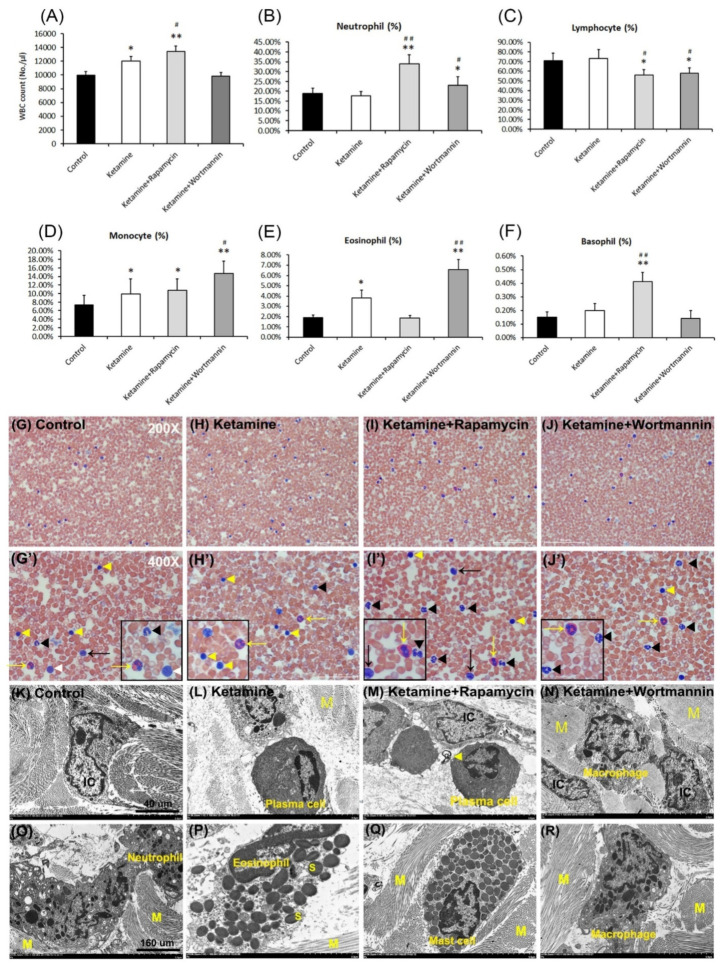Figure 5.
Significant changes in the numbers of total white blood cells (WBCs) and leukocyte differential counts. Quantification of the number of total WBCs was shown in (A). Quantifications for the percentage (%) of circulating neutrophils (B), lymphocytes (C), monocytes (D), eosinophils (E), and basophils (F) to total WBCs were present. Treatment with rapamycin alleviated eosinophil-mediated inflammation to improve the pathogenesis of KIC. Data are presented as means ± SD, * p < 0.05, ** p < 0.01 versus control group; # p < 0.05, ## p < 0.01 versus ketamine group. (G–J and G’–J’) The prominent feature of circulating leukocytes stained with a blood smear. Enlarged images (G’–J’) for prominent feature of leuocytes from images G–J were shown. Yellow arrow and arrowhead indicate eosinophil and lymphocyte, respectively. The black arrow and arrowhead represent monocyte and neutrophil, respectively. The white arrowhead denotes basophil. The enlarged images were inserted in the bottom right. (K–N) The morphology of leukocytes detected by TEM in the control group (K), the ketamine group (L), the ketamine+rapamycin group (M), the ketamine+wortmannin group (N). (O–R) Infiltrated inflammatory cells, including lymphocytes, neutrophils (O), eosinophils (P), mast cells (Q), and macrophages (R), into lamina propia. Specific leucocytes in various sites of the bladder were reflected in increased numbers in the circulation. Scale bar = 40 μm (Magnification ×4000) and 160 μm (Magnification ×100,000). N, nucleus; M, muscle.

